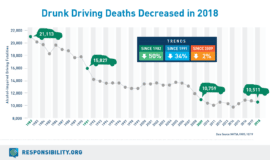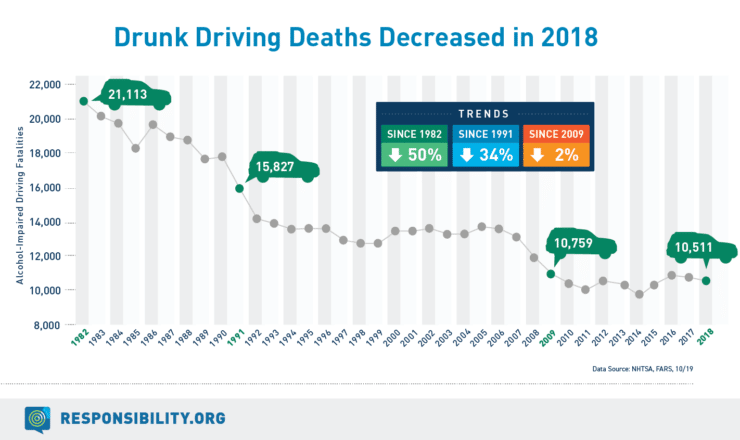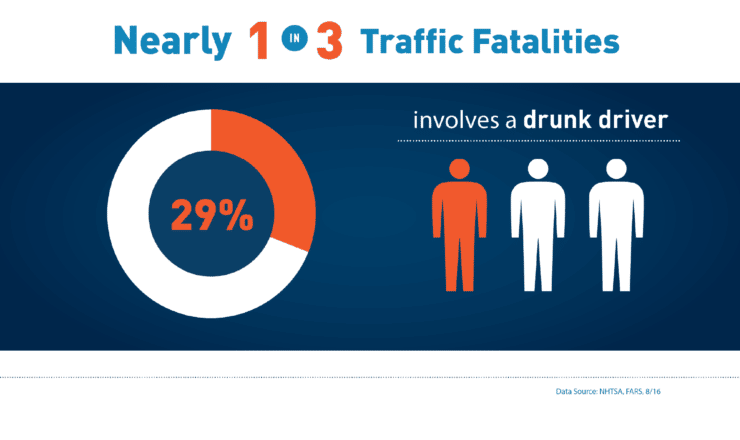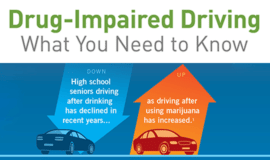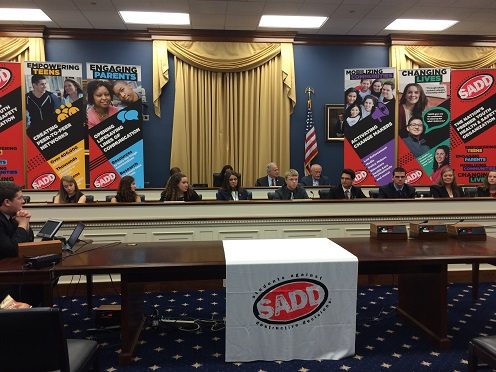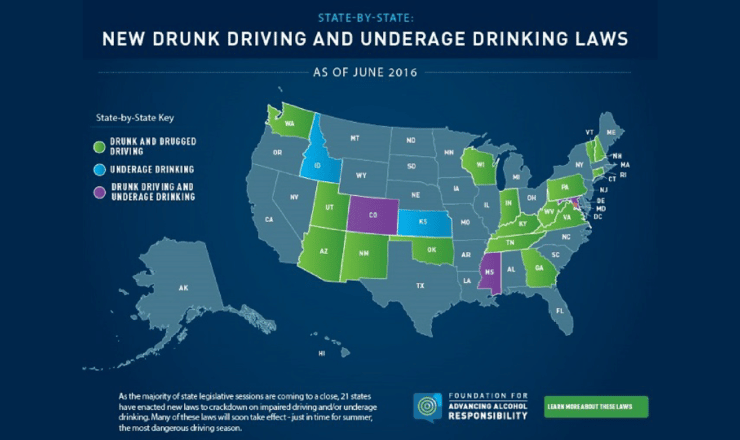Why it is hard to supervise convicted impaired drivers
According to the Bureau of Justice Statistics, in 2013 there were more than 4.7 million individuals on community supervision in the United States. Of this population, approximately 15% of the individuals on probation or parole have a driving while impaired (DWI) conviction and approximately 8% have multiple DWI convictions. While statistics show that about two-thirds of individuals convicted of a DWI will self-correct, another one-third continue to drive impaired and pose a significant threat to our communities. These are the high-risk drunk drivers who often end up on adult probation caseloads.
The approach to addressing the behaviors of most drunk drivers involves sanctions to prevent driving (e.g., license revocation or suspension, incarceration) or drinking and getting behind the wheel of a vehicle (e.g., ignition interlocks). High-risk DWI offenders are also likely to be ordered to abstain from consuming alcohol during their term of probation and may be required to use alcohol monitoring technologies (e.g., transdermal alcohol monitoring devices, in-home breath testing).
As is the case with each type of offender, high-risk drunk drivers pose several challenges for supervision officials. Some of the common challenges include:
- manipulative behavior;
- denial of a substance abuse problem;
- lack of recognition or minimal insight into the criminal nature of their actions; and
- minimal motivation to change behavior.
This offender population typically lacks a formal education and is often unemployed or under-employed. At the same time, the costs of supervision of this population including court fines and fees, treatment, and alcohol monitoring technologies (e.g., interlocks, continuous alcohol monitoring) as well as indirect expenses due to loss of license can be significantly higher than for other groups of offenders.
Although the challenges to supervising this DWI population can be vexing, the reality is that they comprise just one of many high-risk populations that find their way on to community supervision. With the costs of prison and jail incarceration crippling local and state budgets, an array of high-risk offenders are finding themselves on probation.
A typical adult probation caseload might consist of 70 or more individuals with convictions for a variety of different offenses (e.g., drug offenses, theft, domestic violence, sex offenses, etc.). Many of these offenders also have substance use and mental health disorders similar to impaired drivers. So while probation officers are equipped to address these issues, they add to workloads and put a strain on already limited departmental resources. Perhaps the greatest challenge is ensuring that DWI offenders are assessed and referred to appropriate treatment interventions. In most jurisdictions, impaired drivers end up on banked or unsupervised caseloads due to the offense of drunk driving being classified as either a misdemeanor or low level felony. As a result, they receive limited assessment and supervision.
But there is good news! With the advent of evidence-based practices and assessment-driven supervision, probation officers now have the ability to work smarter and better focus resources where they are most needed.
When faced with the specter of effectively addressing the numerous issues that DWI probations present with (e.g., lifetime of alcohol and/or drug dependence, mental health issues, etc.), community supervision officers should consider some of the following approaches to hold these individuals accountable while simultaneously promoting positive behavioral change:
- Assessments: There are a number of risk assessment instruments that give probation officers guidance in determining the appropriate level of supervision based on the risk that the offender poses to the community (e.g., their likelihood of recidivating) and in making referrals to treatment interventions and services that match their needs. Two examples of assessment instruments developed specifically for a DWI offender population are American Probation and Parole Association’s (APPA) Impaired Driving Assessment (IDA) and Cambridge Health Alliance’s Computerized Assessment and Referral System (CARS).
- Supervision Plans: Using assessments as a roadmap, probation officers are better able to develop individualized case or supervision plans that outline supervision strategies and treatment services that will help hold impaired driver probationers accountable and promote prosocial behavioral change.
- Partnership and Collaboration: Quite simply, it is impossible for probation officers to adequately manage the needs of high-risk drunk drivers without actively developing partnerships with organizations and individuals within the community to enhance and support probationer supervision, treatment and recovery. The use of technologies such as ignition interlock and transdermal alcohol monitoring devices as well as breathalyzer and urine-analysis testing for drugs and alcohol are invaluable tools to promote probationer accountability.
- Community-based substance abuse treatment: Substance use treatment and programming is an essential component to the successful supervision of most high-risk impaired driver probationers. Probation officers should actively engage with providers and communicate regularly about appropriate treatment regimen, program compliance, sobriety and any obstacles to the individual’s successful completion of treatment.
- Training and Research: When community corrections staff do not receive adequate training to aid in the supervision of impaired driver probationers (particularly those deemed to be high-risk), the effectiveness of community supervision is compromised. Organizations such as the National Highway Traffic Safety Administration (NHTSA), APPA, Substance Abuse Mental Health Services Administration (SAMHSA), National Institute on Alcohol Abuse and Alcoholism (NIAAA), Traffic Injury Research Foundation (TIRF), and org offer websites with invaluable information for both the public and practitioners (e.g., publications, online training programs). Applying this information, as well as investing in local and regional training opportunities, are among the best strategies community corrections agencies can implement to minimize the challenges to supervising impaired drivers and offer a focused solution that enhances public health and safety.
For more information, please contact Mark Stodola, NHTSA/APPA Probation Fellow at [email protected]
As the NHTSA Probation Fellow, Mark Stodola actively works to expand the probation and parole community’s knowledge of impaired driving and highway safety programs, provide technical assistance and guidance to probation officers and offices across the nation, and provide the probation perspective to NHTSA and partners.
*The views and opinions expressed in this blog are solely those of the author and do not necessarily reflect the views of the Foundation for Advancing Alcohol Responsibility (Responsibility.org) or any Responsibility.org member.*








